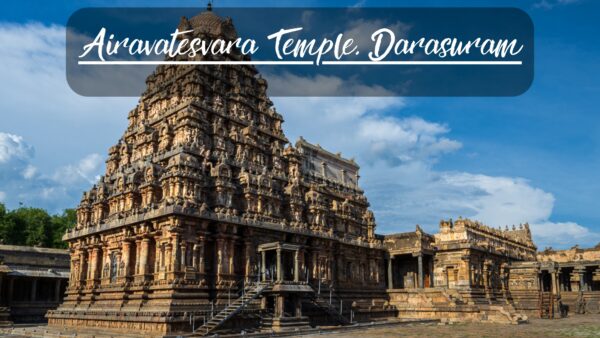In Tamil Nadu, you will stumble across temples at literally every bend of the road. Whether you visit a city, a town, or an otherwise run-of-the-mill village, you will find at least one temple at the heart of the settlement. Darasuram, located just 4 km away from the popular ‘tirtha’ Kumbakonam, is no exception. At first glance, Darasuram appears as an ordinary village, encircled by paddy fields and coconut groves. However, at its centre lies an exceptionally majestic temple, which once served as a royal temple of the mighty Cholas. The Airavatesvara Temple, built by Rajaraja II, is fashioned as a typical Dravidian-style temple with receding tiers or ‘tala’ forging a stunning pyramidal ‘shikhara’ or superstructure. It is one of the Great Living Chola Temples, and since the olden days, the Airavatesvara Temple has attracted devotees and travellers alike.
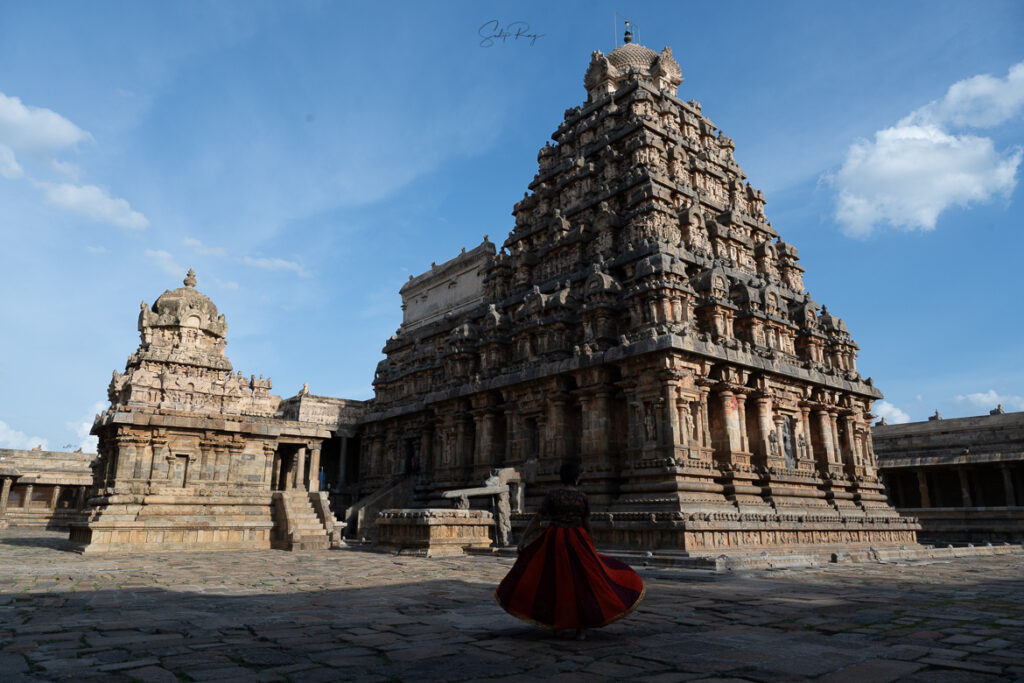
Table of Contents
Where is Airavatesvara Temple located?
The Airavatesvara Temple is located in Darasuram, a nondescript hamlet located just 4 km away from Kumbakonam, the renowned pilgrimage centre. It lies in the Palaiyarai region, which continued to remain an important centre of Chola administration even after new capitals were established at Thanjavur and Gangaikondacholapuram. Darasuram itself became an eminent temple settlement, centred around this royal temple built by Rajaraja II.
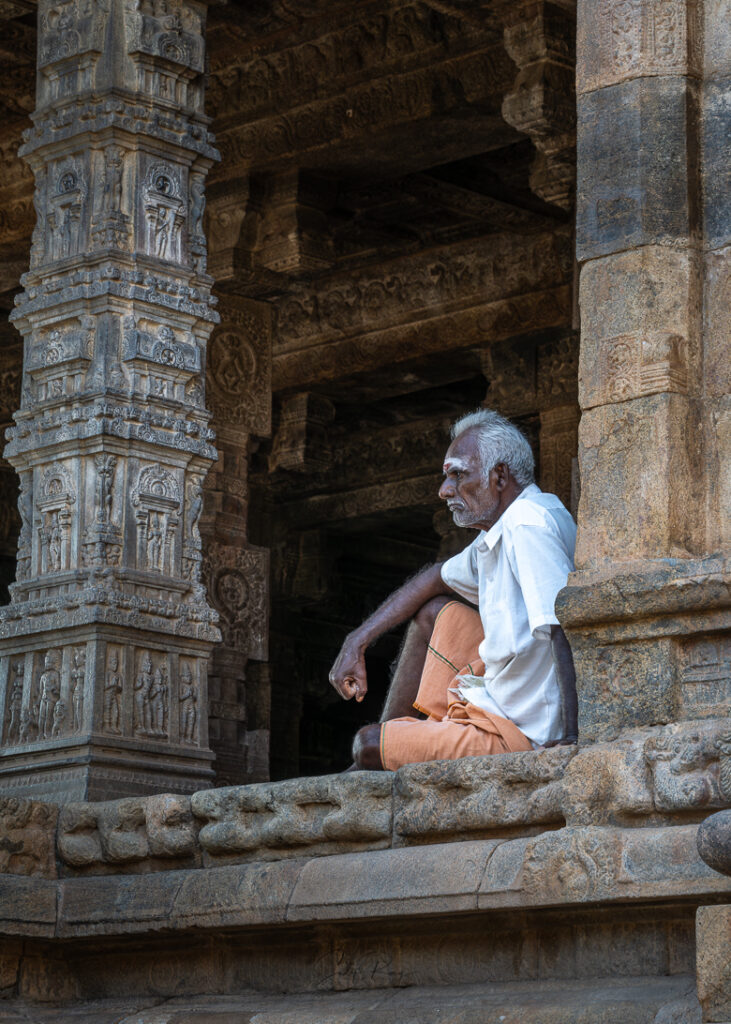
Why you need to visit the Airavatesvara Temple:
The Airavatesvara Temple is regarded as a splendid specimen of the Later Chola architectural style. It is the third in line of the grand stone ‘vimanas’ built by the imperial Cholas. Along with the stupendous Brihadisvara or Rajarajesvara Temple of Thanjavur and Brihadisvara Temple of Gangaikondacholapuram, the Airavatesvara Temple is a UNESCO World Heritage Site. This temple trio is known as the Great Living Chola Temples.
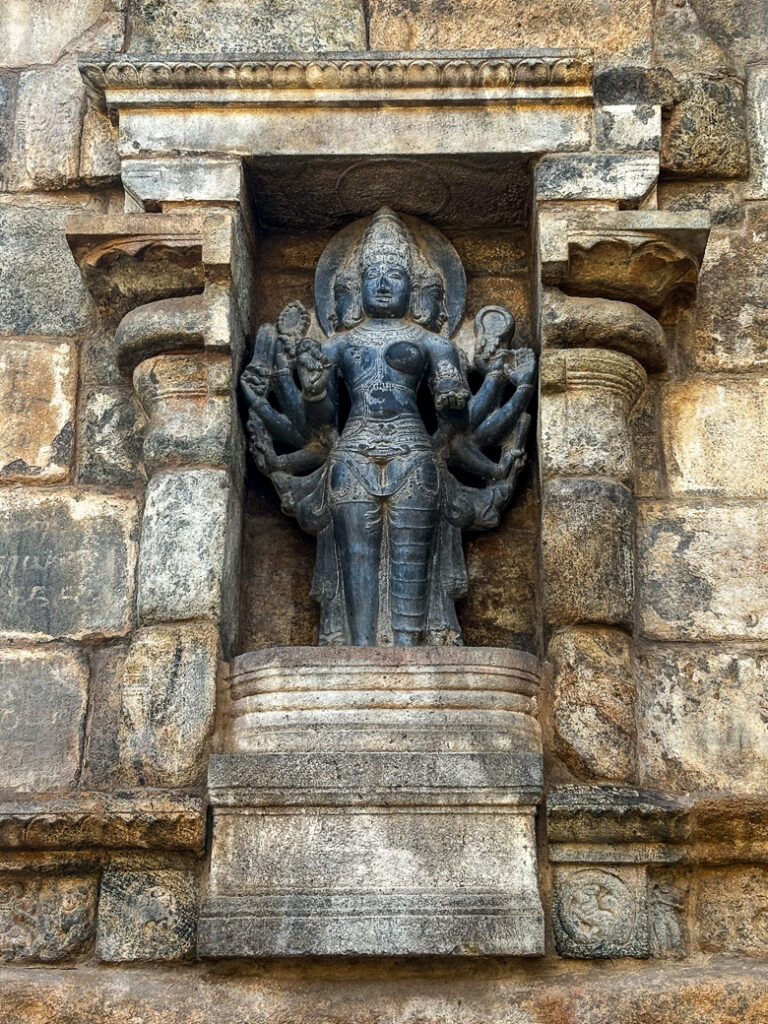
About Airavatesvara Temple:
The Airavatesvara Temple was built by Rajaraja II, and its construction was completed in 1166 CE. According to local belief, Indra’s white elephant, Airavata, recovered his pristine white colour after taking a dip in the sacred tank of this temple. Hence, the temple was named after Airavata, the heavenly elephant.
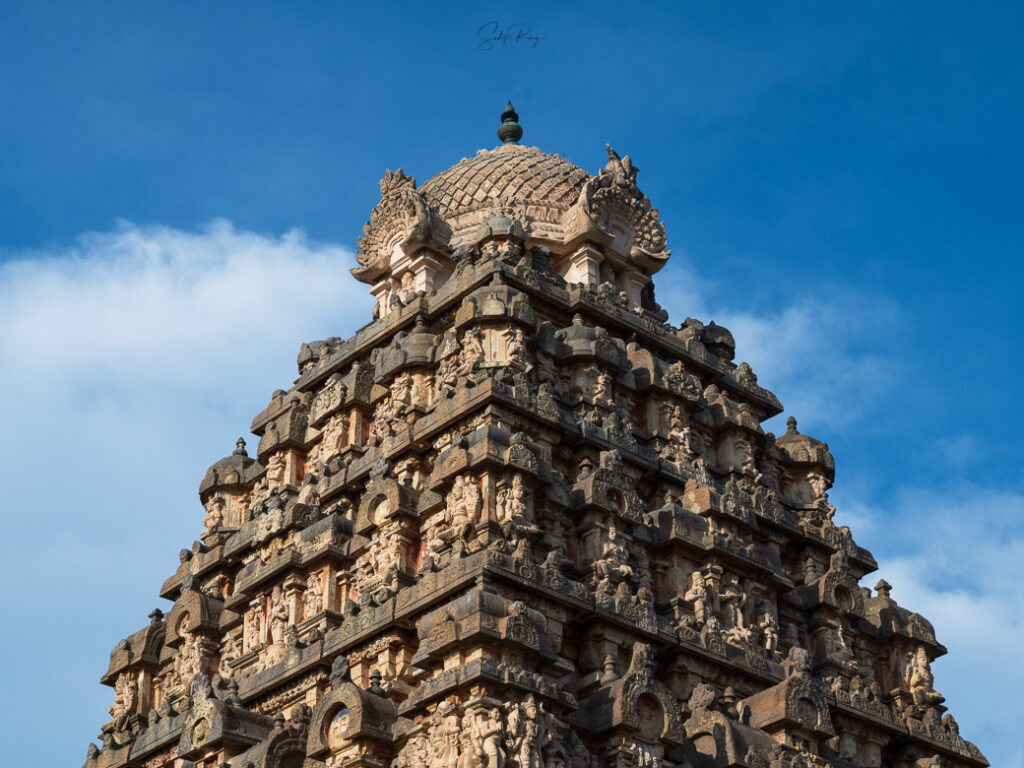
This astounding temple is dedicated to Siva, and the linga is called Rajarajesvaram – Udayar. It is believed that the temple was constructed by Rajaraja II to appease a cowherdess who had donated the huge shikhara stone at Thanjavur, and subsequently desired a temple to be built in her own village.
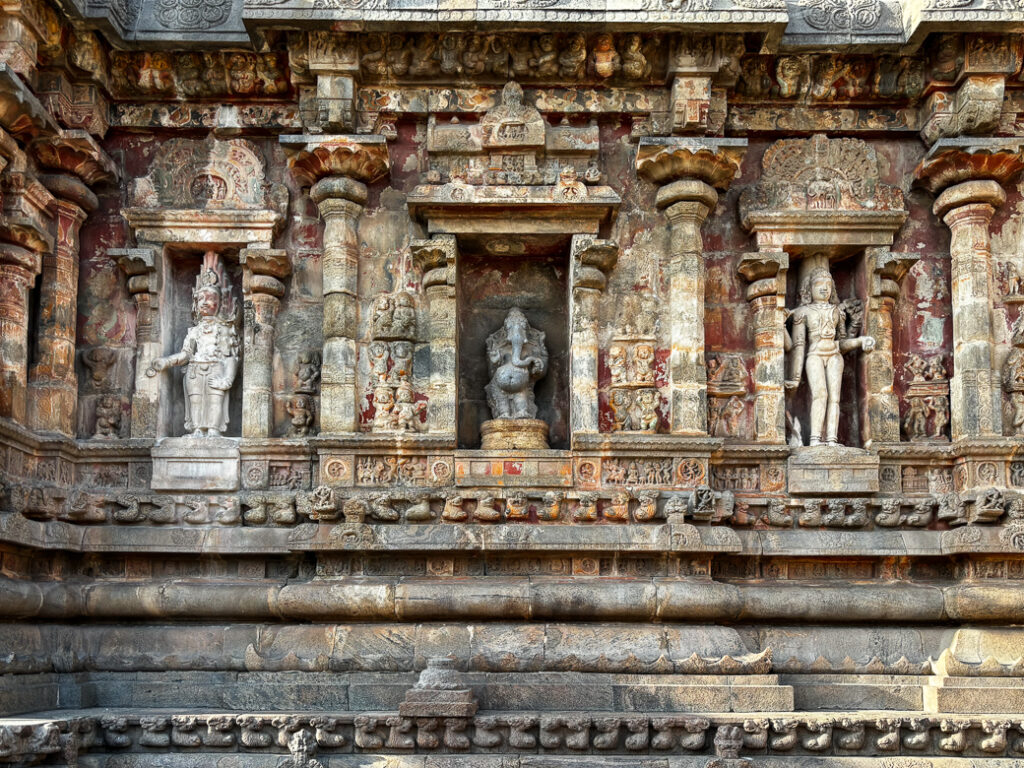
The Airavatesvara Temple has a square plan. It is a ‘Karakkoil’ type of temple, where the shrine is modelled after chariots. The astounding vimana is 24 m high, with five diminishing tiers. Above the fifth tier rests the circular Griva with niches at cardinal points flanked by Nandi at the corners, and surmounted by a domed Shikhara and a metal Stupi. The sanctum or Garbha gGriha is connected with the Mukha Mandapa through the Ardha Mandapa which is flanked by two massive Dvarapalas. The Mukha Mandapa opens into a rectangular Maha Mandapa, supported by 48 decorative pillars. To the east of the Maha Mandapa lies the chariot-shaped Agra Mandapa.
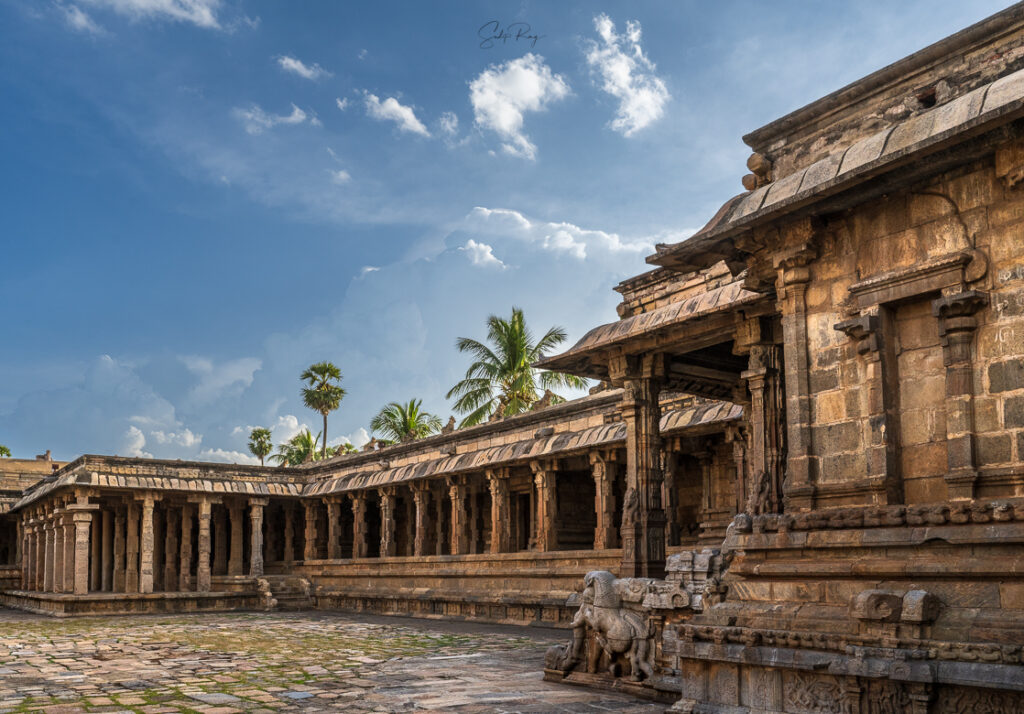
The key note of Airavatesvara’s decoration is ‘nitya vinoda’ or perpetual entertainment. Moreover, stylistically, the Airavatesvara Temple marks the transition from the full abundance of the Chola style seen at Thanjavur and Gangaikondacholapuram to the great temple complexes of the post-Chola period.
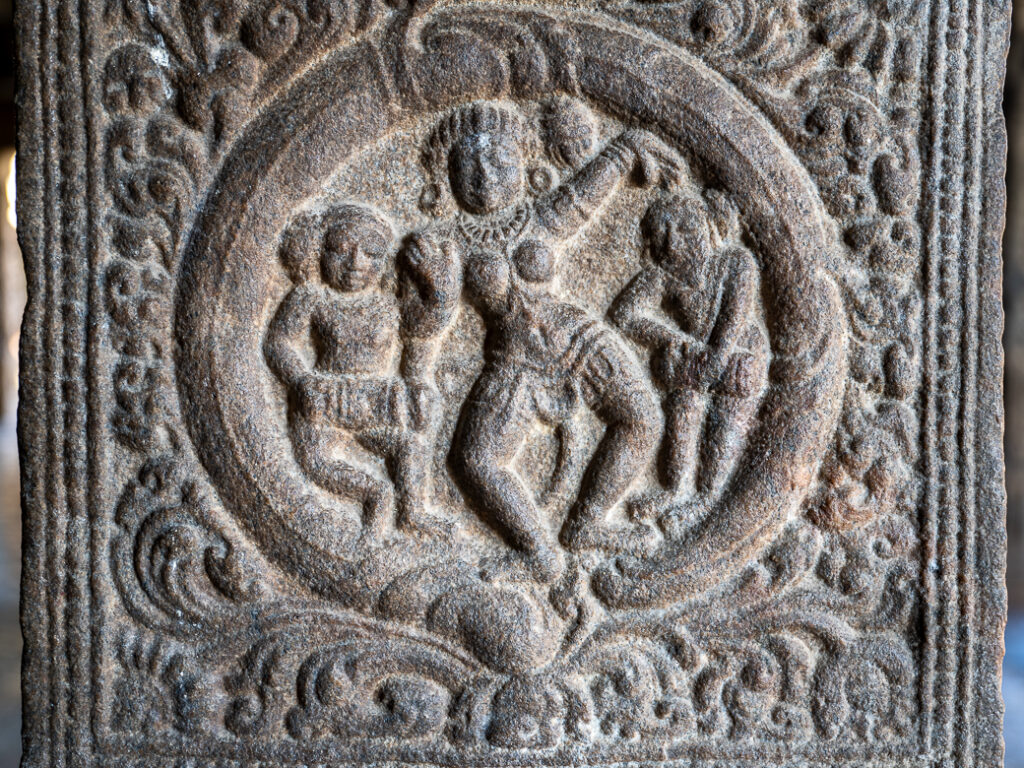
What to see inside the Airavatesvara Temple complex:
Gopuras:
In its heyday, the Airavetsvara Temple had two Gopuras. However, the upper portion of the larger Gopura is completely lost. The second Gopura is fully preserved and comprises a large Prakara circling the temple and decorated with couchant bulls at regular intervals.
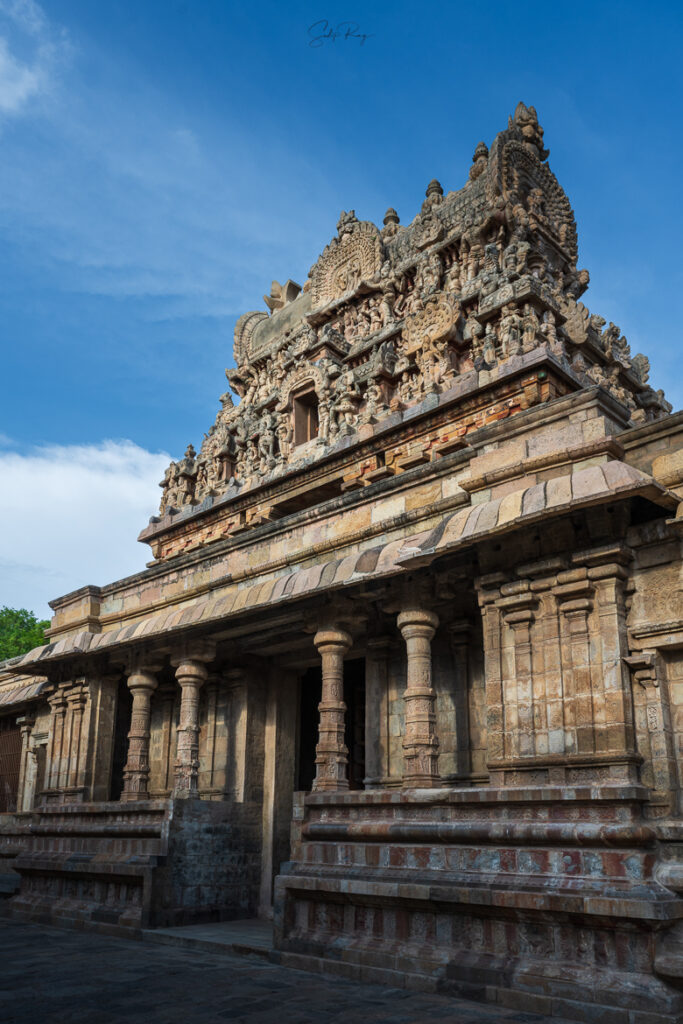
Pillars in a row support the Gopura, which is adorned with fine carvings of lovely Apsaras, Siva Ganas, and other Saivite motifs.
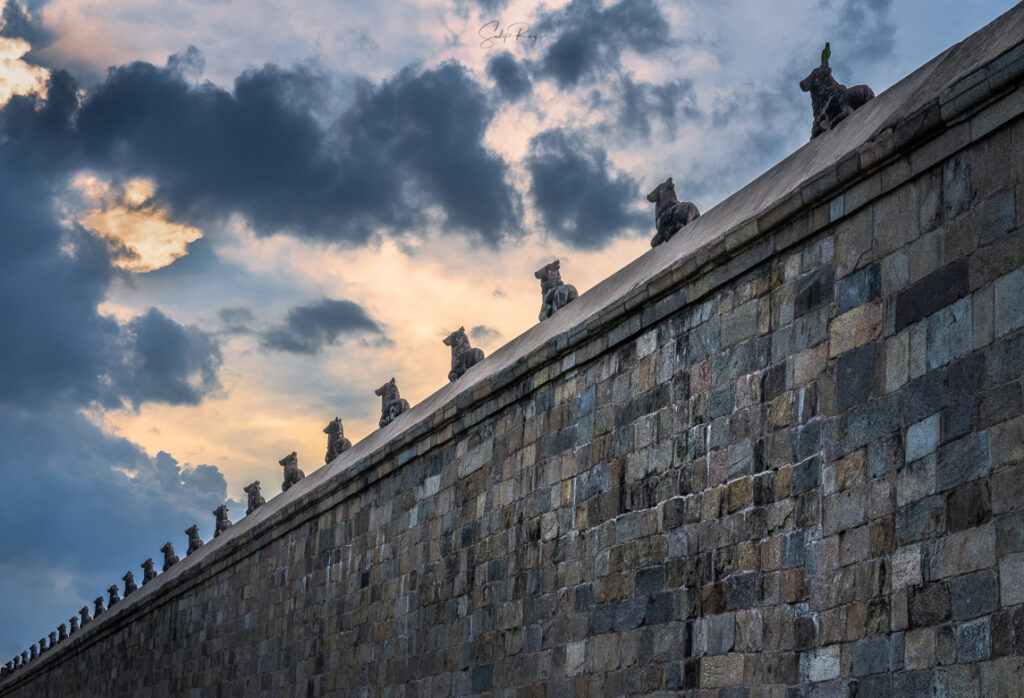
Agra Mandapa:
The main shrine is approached through a distinctive agra mandapa, also known as Raja-gambhiran tiru-mandapam after Rajaraja II. It is conceived as the chariot of Tripurantaka, with wheels, hubs, and spokes carved in relief, and drawn by caparisoned horses.
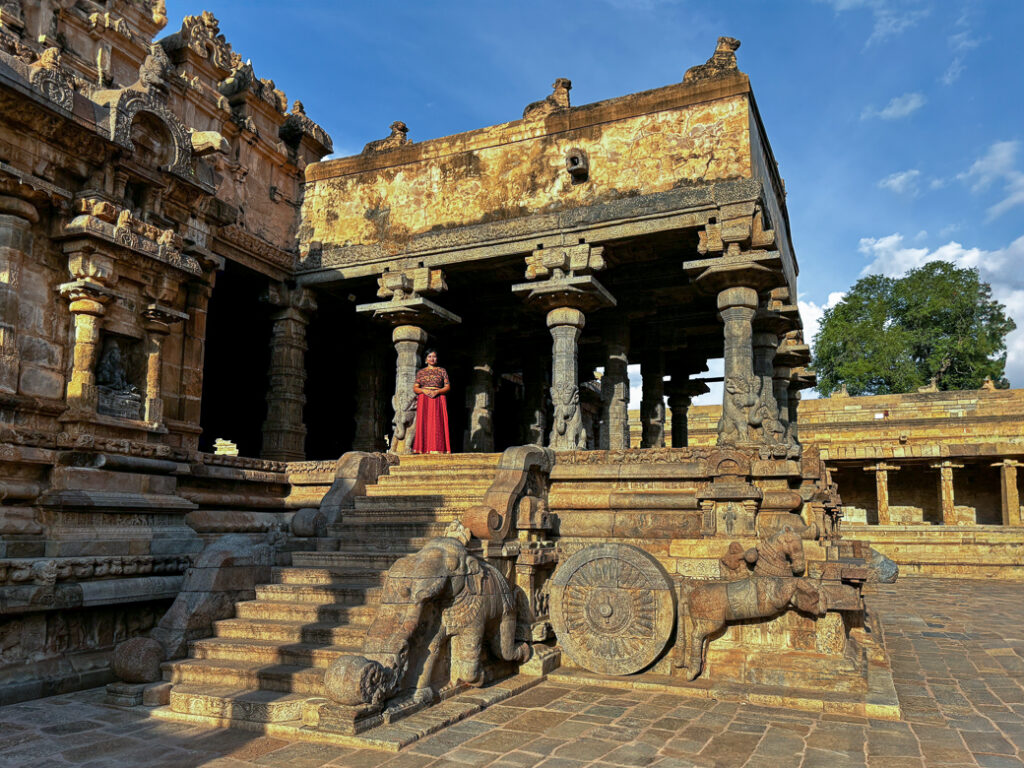
The Agra Mandapa is equipped with a flight of steps to the east and west. The exteriors of the balustrades are admirably embellished with a long curling trunk coming out of a lion’s head. A similar design runs parallel to the trunk of an elephant, lost in the open jaws of a Makara whose floriated tail is curled up. The elephant is marvellously decorated and mounted by Sankha-Nidhi and Padma-Nidhi. In addition, the chariot-like structure is further decorated with galloping horses beside the flight of steps.
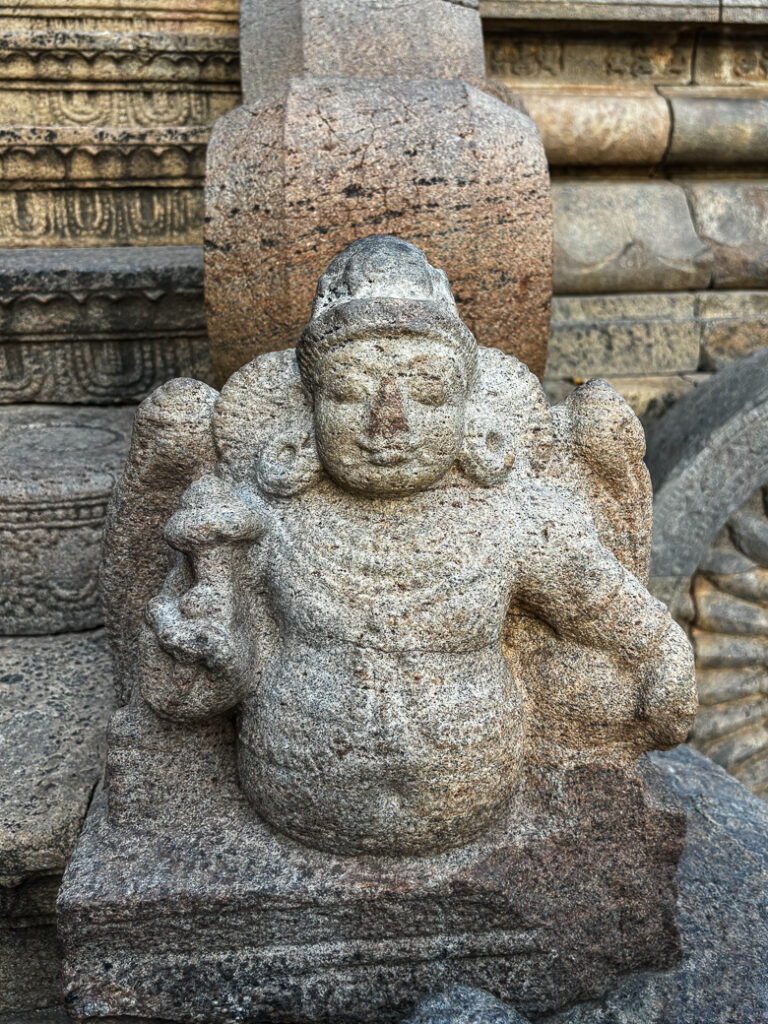
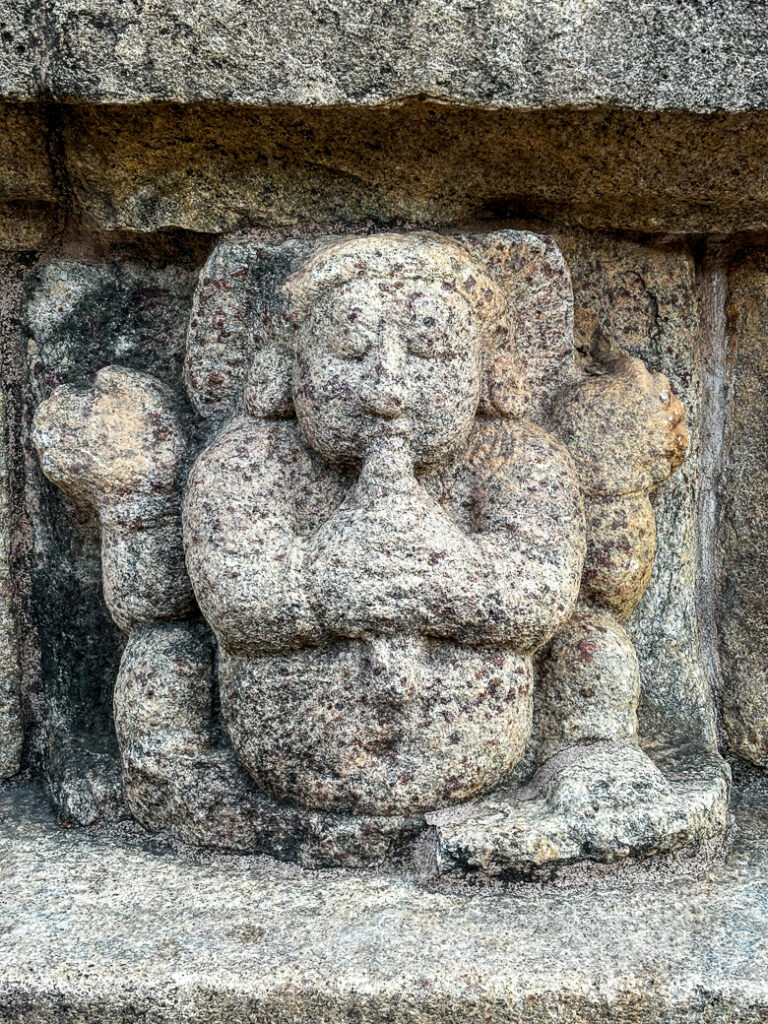
The Agra Mandapa also possesses eight outer pillars supported by squatting yalis. The pillars inside flaunt Bodhika decorations and depict small panels illustrating mythological stories such as the penance of Parvati, Siva’s marriage, the birth of Kumara, the attack of Manmatha, and so on.
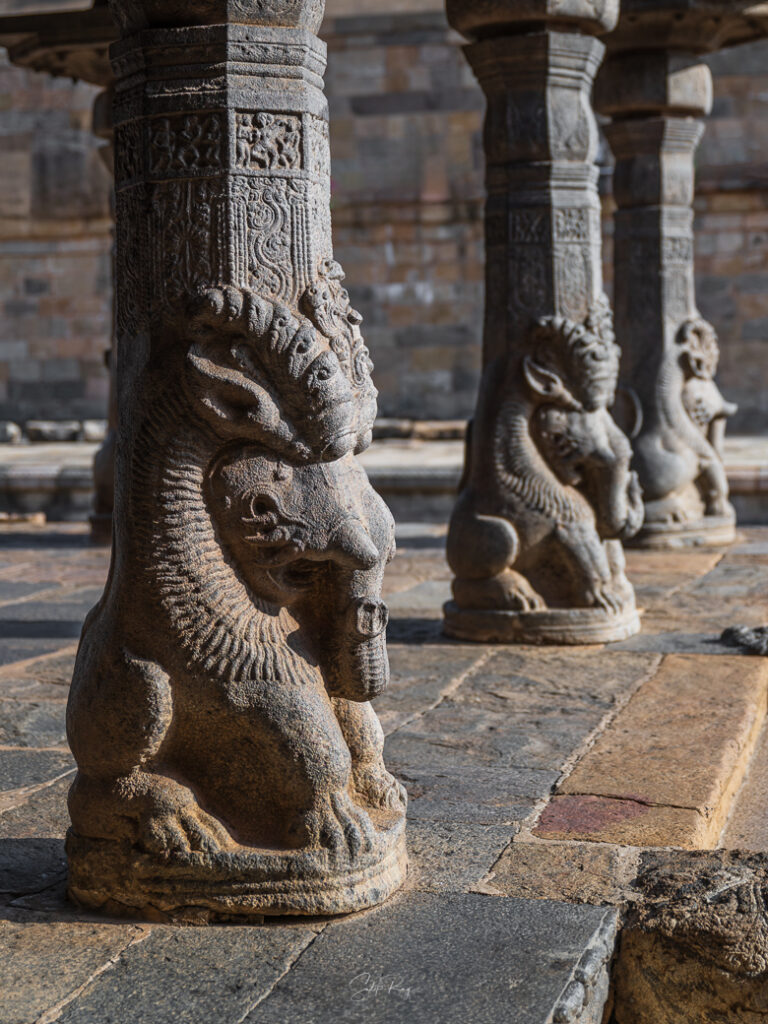
The base of the Agra Mandapa is decorated with panels of Siva fighting Tripura demon from his chariot, destruction of Daksha’s sacrifice by Virabhadra, Siva fighting Yama as Kalantaka, and the likes.
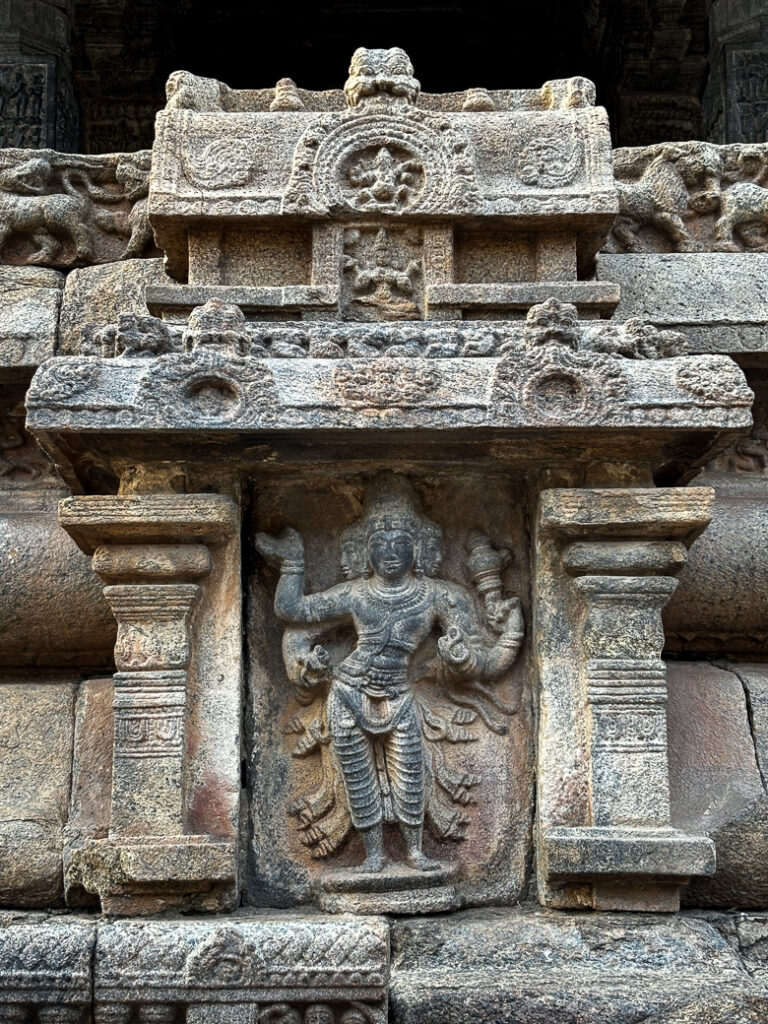
This chariot-esque agra Mandapa is undoubtedly the most visually stunning section of the Airavatesvara Temple. Interestingly, over a hundred years later, a distant descendent of the Chola emperor Kulottunga I had built the Sun Temple of Konark characterized by its giant chariot mandapa.
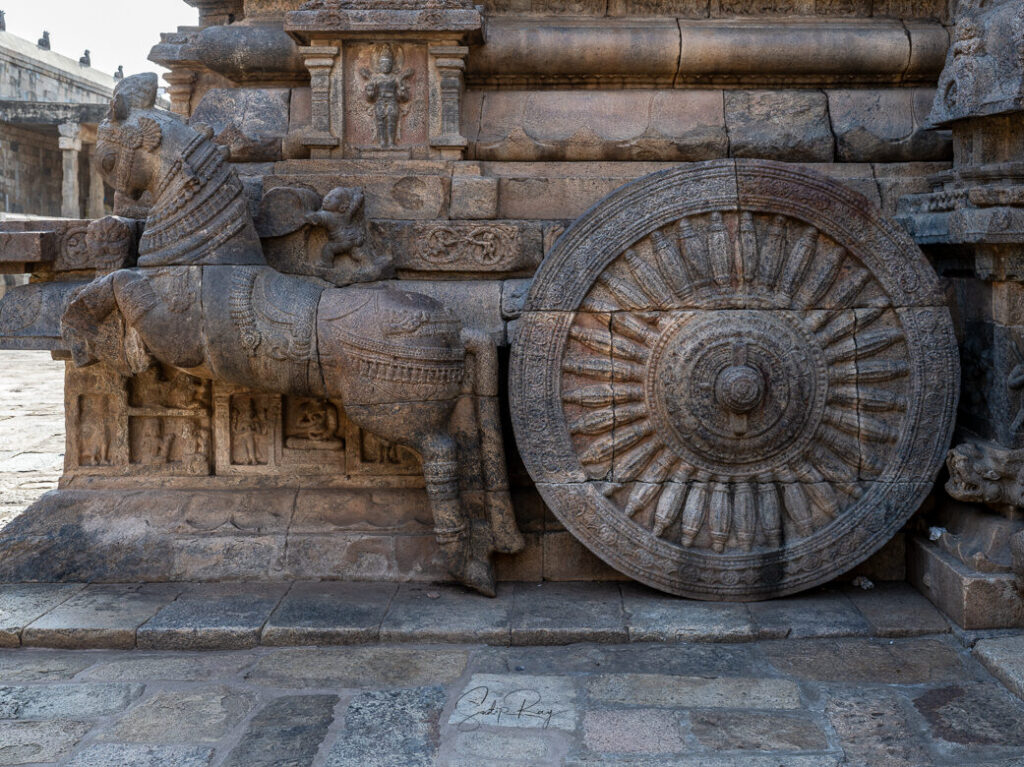
Maha Mandapa:
The Maha Mandapa is set apart by 48 decorative pillars. Beautiful patterns of decorative creepers are depicted on the pillars. They are further decked with circular medallions flaunting figures dancing in diverse poses and musicians.

The ceiling is equally ornate, with square and rectangular patterns. Almost all the central medallions contain dancers and musicians in tune with the main theme of the temple’s decoration, ‘nitya vinoda’ or perpetual entertainment.
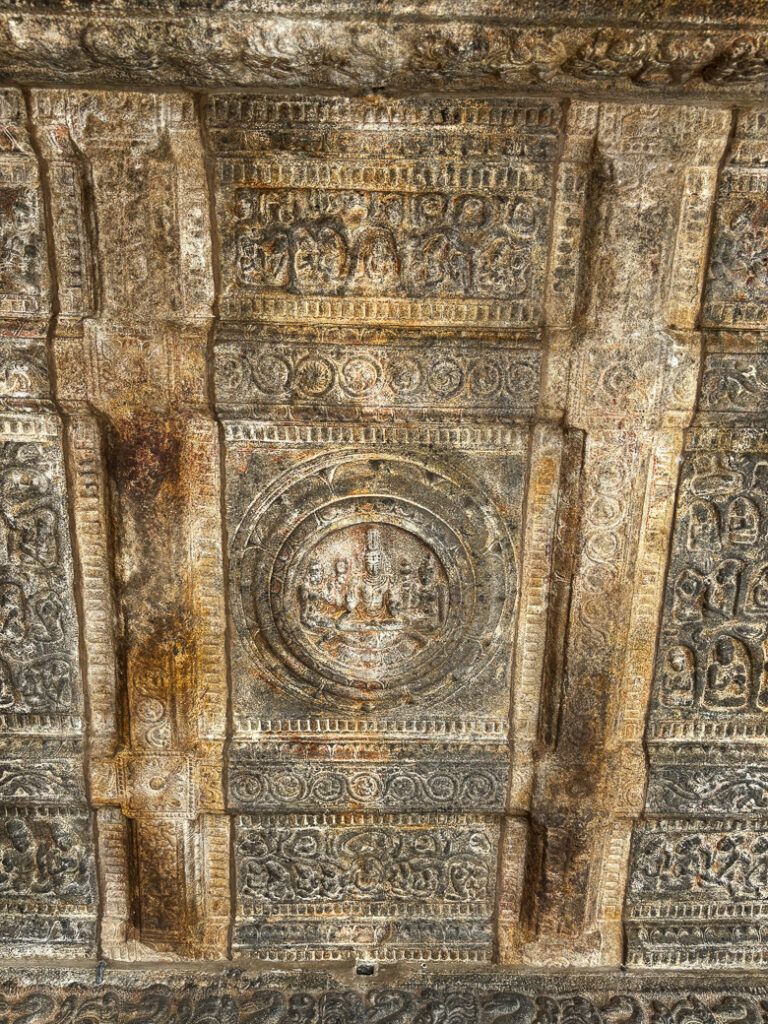
Mukha Mandapa:
The Mukha Mandapa is marked by niches containing Devi with lotus, ‘ratna kalasha’, and Nandikesvara on one side, and saint Kanappa and seated Sarasvati on the other. To the north, there lies a miniature shrine dedicated to the Devi, adorned with Dvarapalikas on either side of the doorway.
Main shrine:
The Garbha Griha has a small seated Nandi in its front. The main doorway is flanked by Dvarapalas armed with huge clubs, whose facial expression is furious. Their four hands are in Tarjani or threatening mudra. They have tusks and trisulas stuck in their bound-up hair. Inside the sanctum, lies the awe-inspiring Siva linga.
Sculptures on the outer walls:
The outer walls of the Airavatesvara Temple contain niches fashioned as alternating ‘Koshtha Panjara’ and ‘Kumbha Panjara’. The niches house superb specimens of early Chola sculptures.
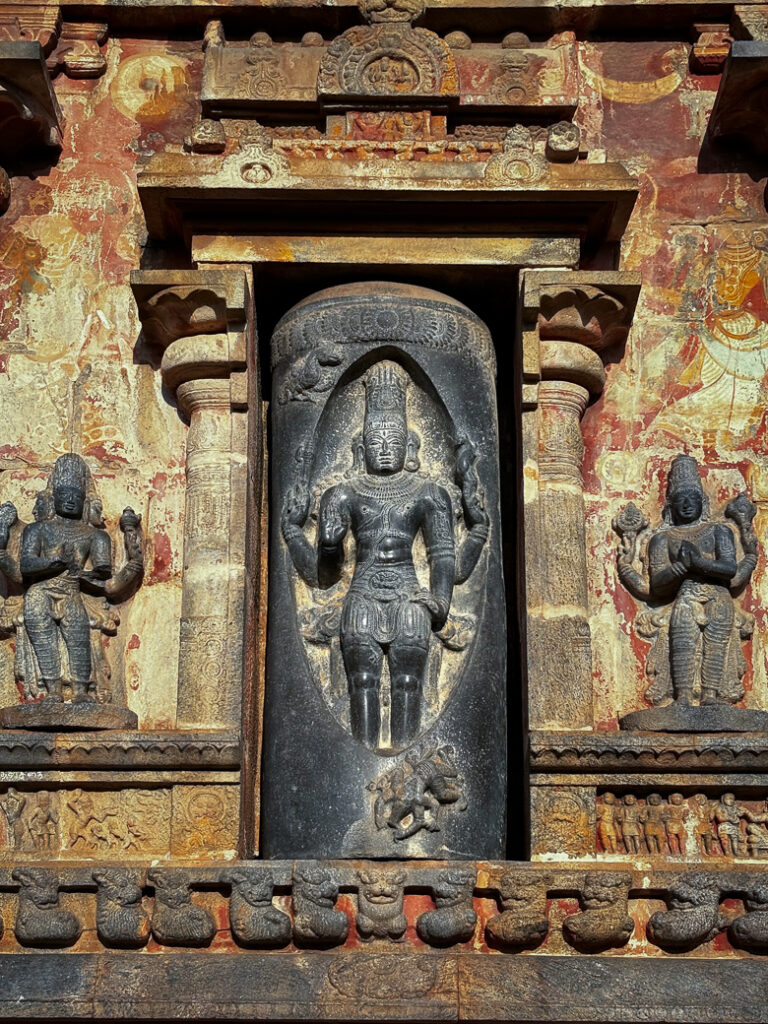
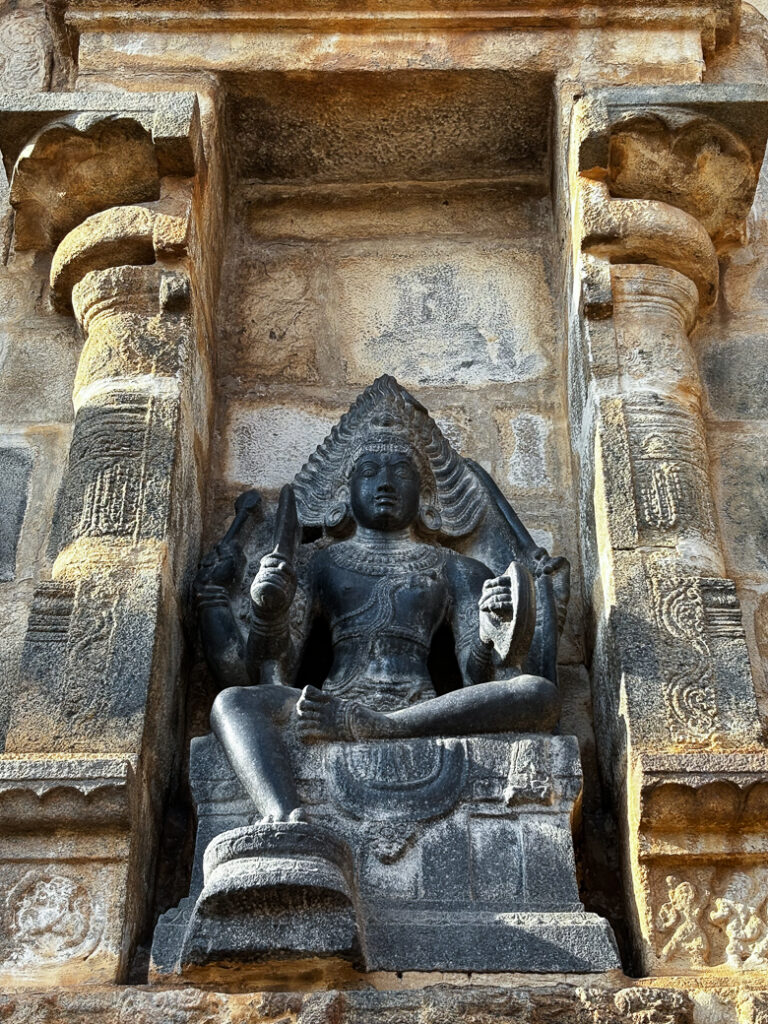
Noteworthy Chola instances are Ardhanarisvara with three faces and eight arms, a four-armed Nagaraja with serpent hood over his head, the dwarf sage Agastya, dancing Martanda Bhairava with four hands and three heads, a standing Ganesa, Dakshina Murti attended by sages, Lingodbhava Siva emerging from a flaming pillar, eight-armed Mahisasuramardini, a seated Devi Bhuvanesvari, Tripurantaka Siva carrying the axe, deer, bow, and arrow, Gajantaka dancing upon the slayed elephant demon, a six-armed Bhairava with his dog behind him, and Mahesa-murti with three heads and four arms carrying the spear, axe, rosary, and kamandalu.
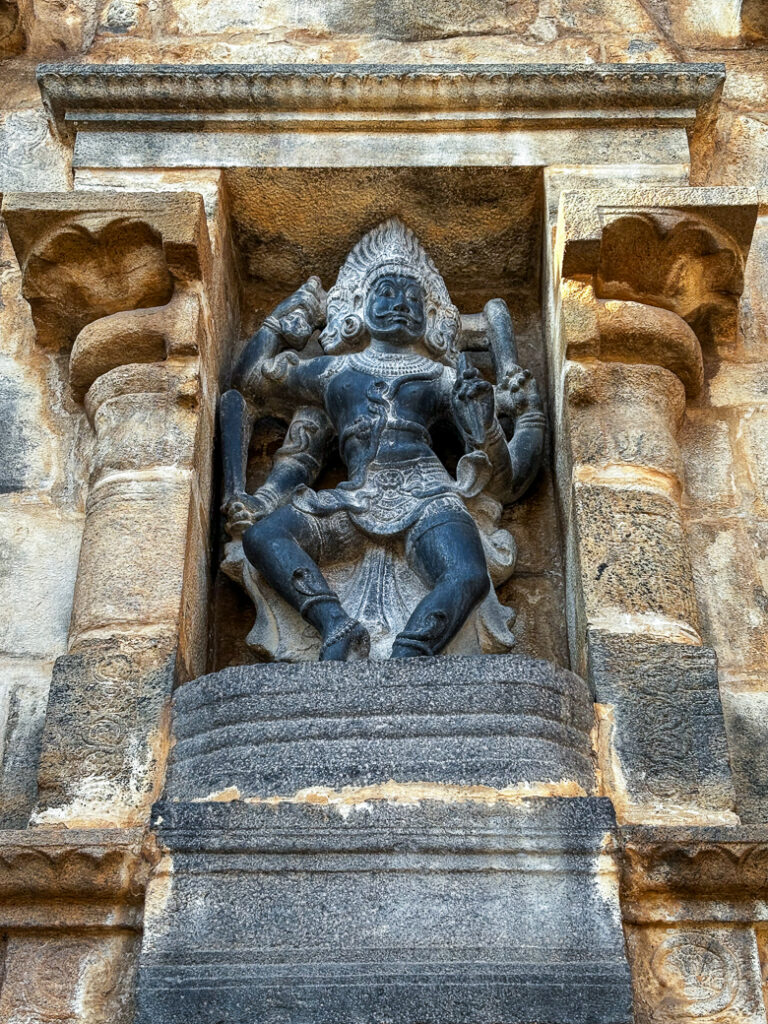
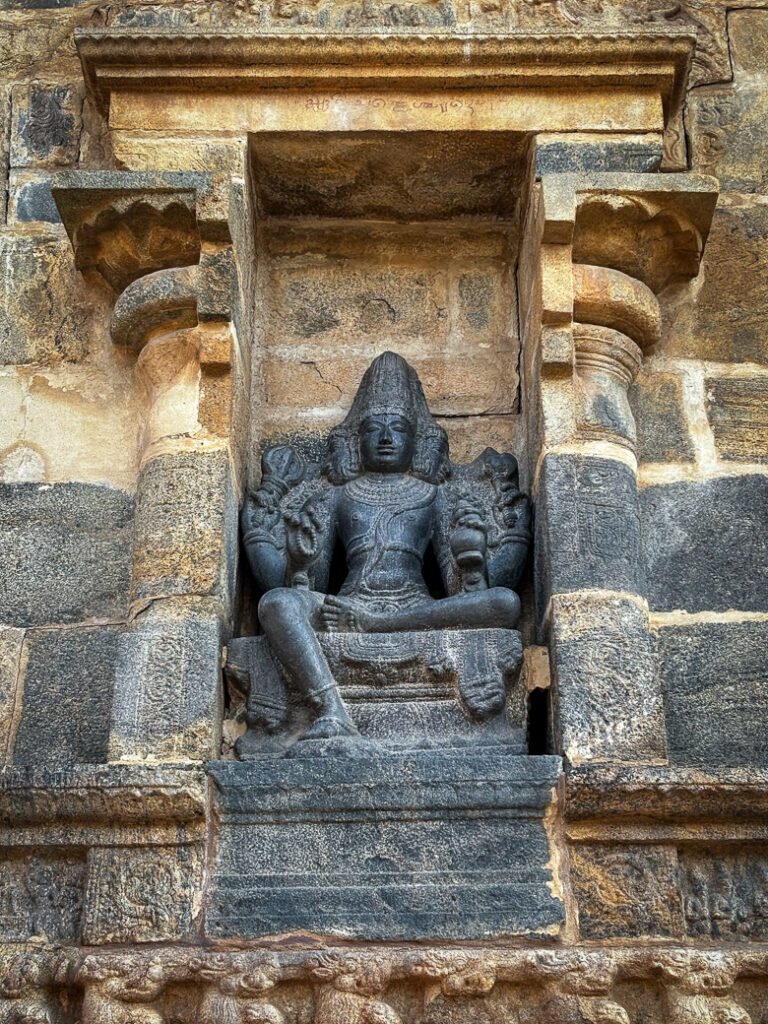
All these beautiful sculptures are carved out of polished black basalt and they display the skilled handiwork of the artisans.
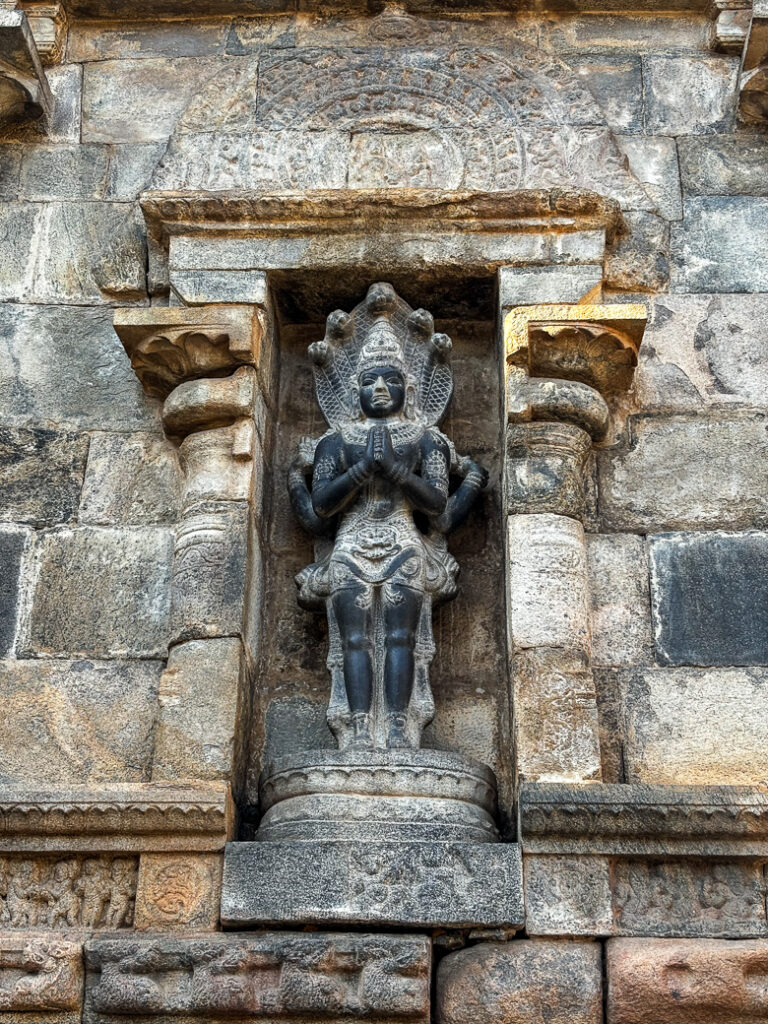
Deivanayaki Amman Shrine:
Dedicated to Parvati or Deivanayaki Amman, this subsidiary shrine lies adjacent to the Airavatesvara Temple. Its plan is similar to that of the main temple. Its Vimana has three tiers, while its niches contain Devi sculptures. Also, like the principal temple, there is a profusion of dance and musical scenes here.
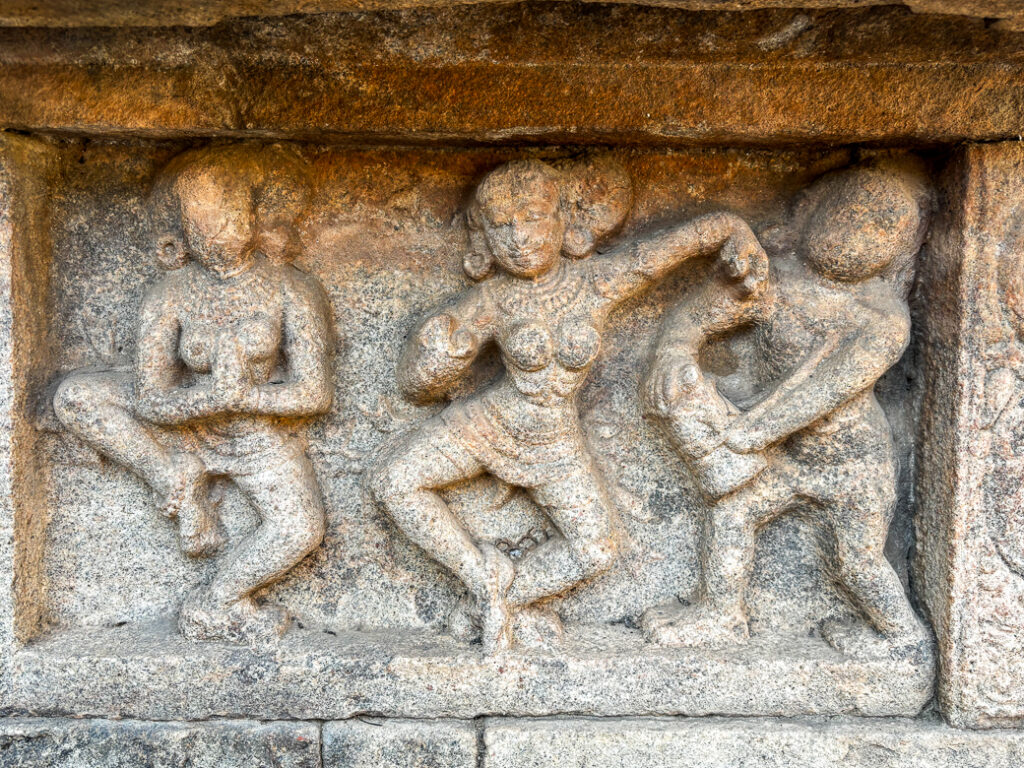
Important FAQs:
Distances of important places from Airavatesvara Temple:
Darasuram is 40 km away from Thanjavur, 94 km from Tiruchirapalli, and 298 km from Chennai.
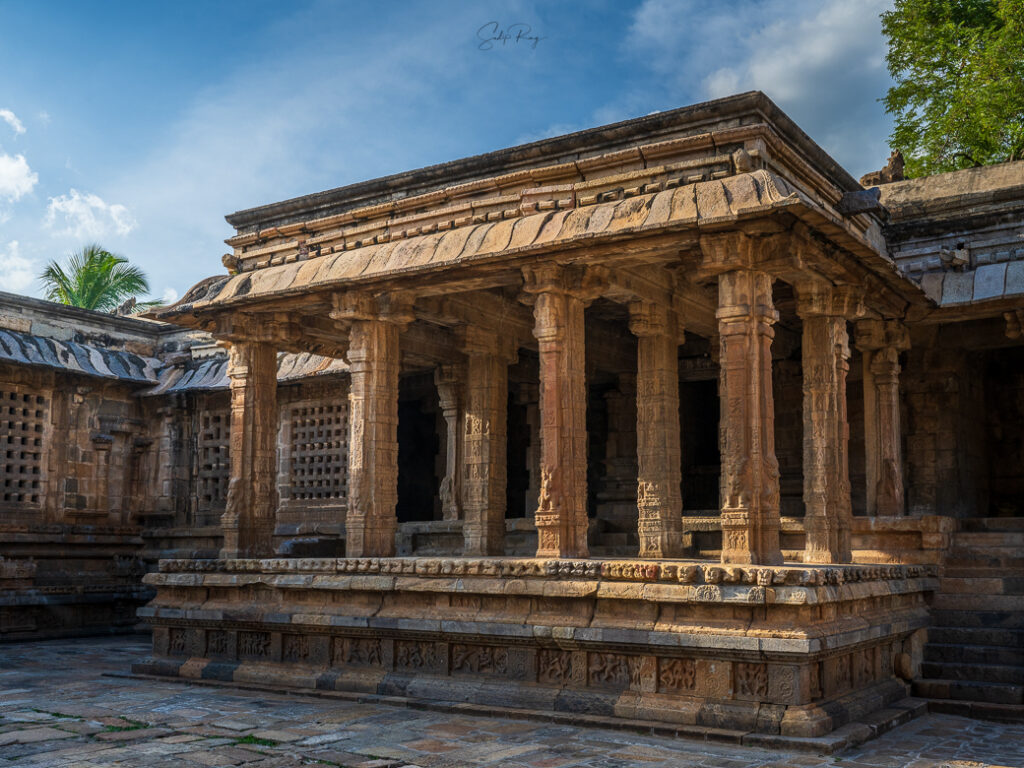
How can I reach the Airavatesvara Temple?
By air: Darasuram’s nearest airport is Tiruchirappalli. Though frequent flights to Tiruchirappalli from most of the major south Indian cities are available, connectivity from other parts of India may be an issue. Hence it would be wise to fly into Chennai, which is very well-connected with every part of India.
By train: Chennai is also well linked by railways with the rest of India. From Howrah, you can board 12839 Chennai Mail, from Shalimar 12841 Coromandel Express, from New Delhi 12622 Tamilnadu Express and 12616 Grand Trunk Express, from Mumbai 22179 Chennai Express, and from Bengaluru 12028 Shatabdi Express and 20608 Vande Bharat Express.
From Chennai, you can easily reach Kumbakonam (the nearest railway station of Darasuram) by train, such as 22675 Chozhan Express, 16751 Rameswaram Express and 16865 Uzhavan Express.
By bus: Daily TNSTC buses from Chennai, Tambaram, and Tiruchirappalli ply to Kumbakonam.
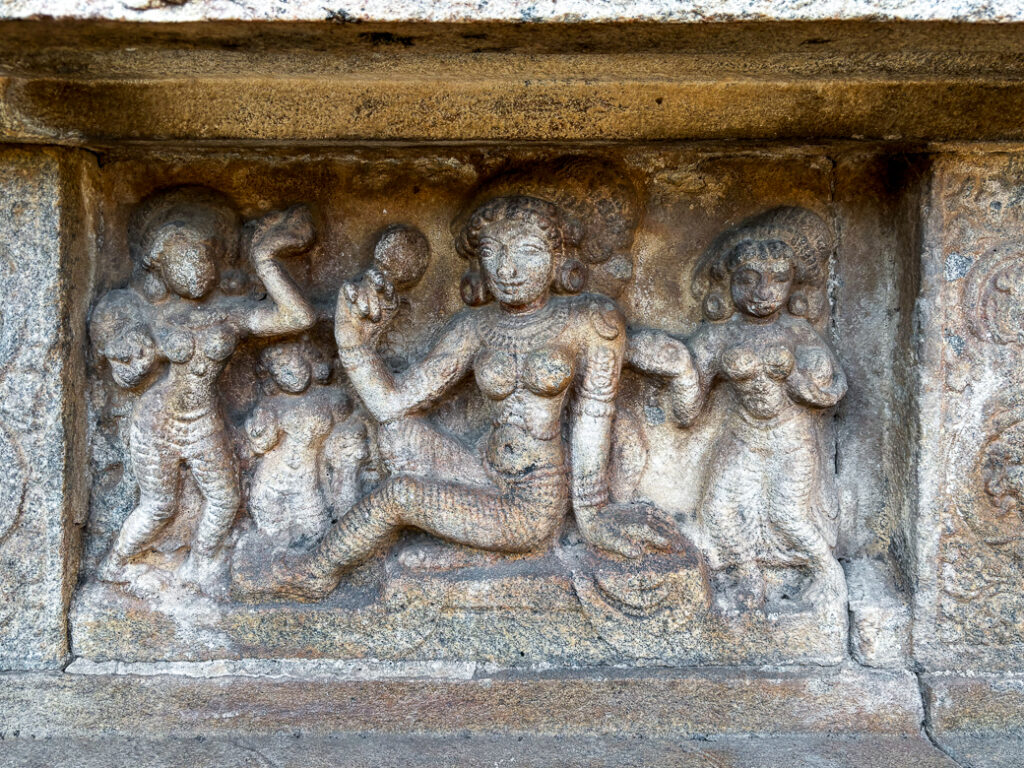
Is there any entry fee for the Airavatesvara Temple?
No entry fee is required to visit this temple.
What are the timings of the temple?
Like every other temple in Tamil Nadu, it remains open from 6 AM to 12 PM and again from 4 PM to 8 PM. We found that like other monuments maintained by the Archaeological Survey of India, this temple does not remain open from 6 AM to 6 PM.
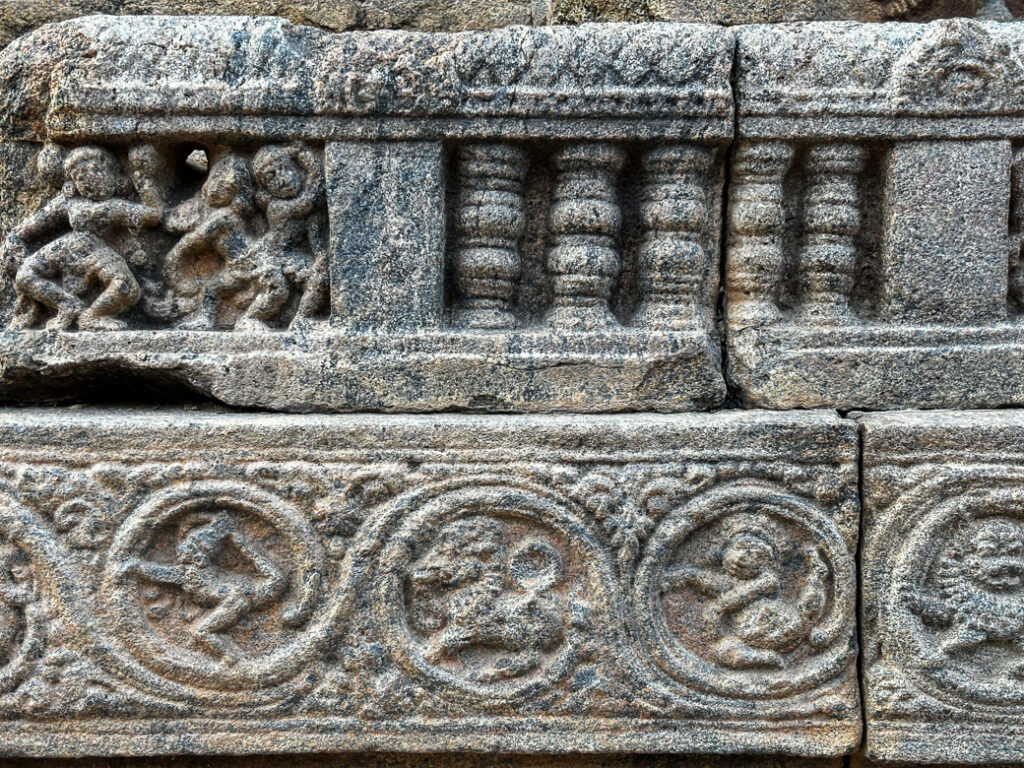
What is the best time to visit this temple?
Although Tamil Nadu remains more or less hot and humid around the year, October to February is comparatively cooler. Also, try visiting the temple early in the morning. Temperature soars as the day proceeds making it uncomfortable to explore the temples.
Where can I stay in Darasuram?
Darasuram does not have a proper hotel. You can either visit this temple on a day trip from Thanjavur or stay at Kumbakonam. In Kumbakonam, you can book a stay at CGH Earth Mantra Koodam, Raya’s Grand, and Navagraha Homestay. If you are willing to stay in Thanjavur, check out Svatma, Sangam Hotel, and Hotel Gnanam.
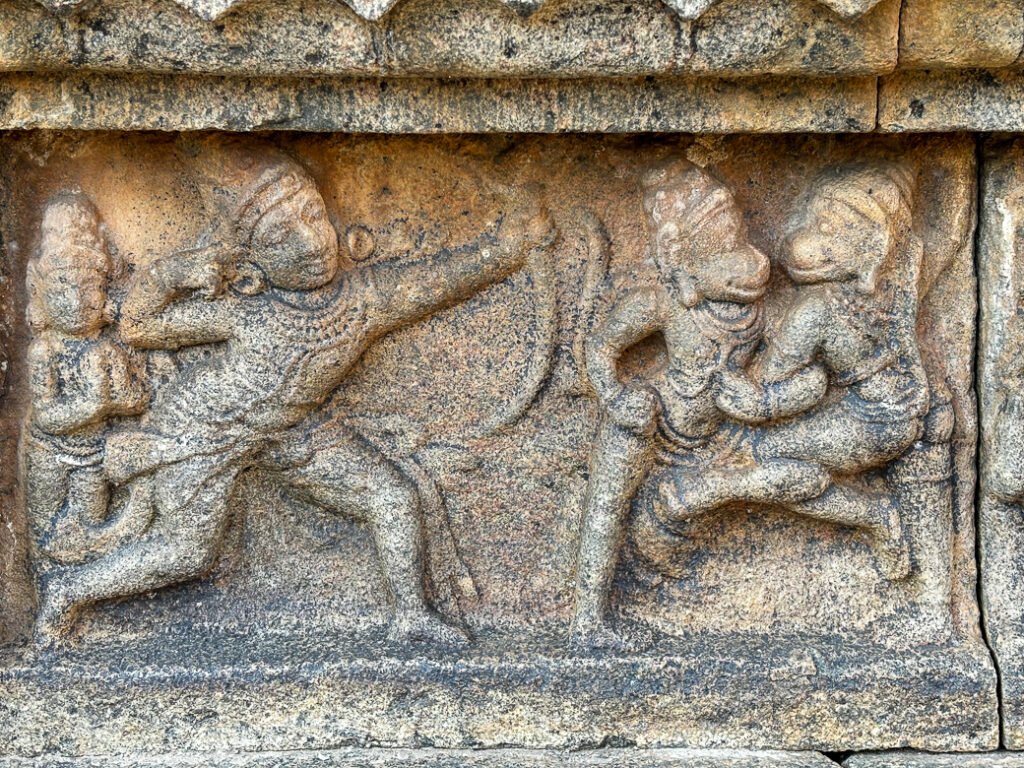
Where to eat in Darasuram?
Like accommodation, Darasuram does not offer many choices for eating out. You can eat at Sri Mangalambika Vilas Coffee Hotel, Venkataramana, Thanmayi Restaurant in Kumbakonam. If you are staying in Thanjavur, there are some interesting and nice restaurants where you can try Tamil cuisine such as Thillana, Vasantha Bhavan, and Pattukottai Kamatchi Mess.
